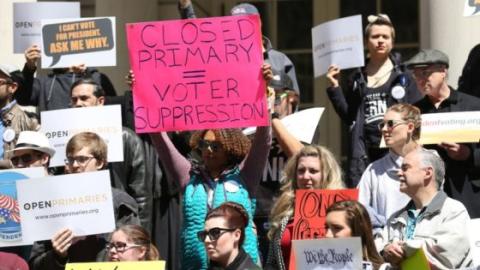The news website, The Island Now, published an editorial recently that is worth reading. It challenges the way many people view voter suppression in the US.
The focus in most media outlets are perceived efforts in Republican state legislatures to suppress the votes of Democrats, as if the problem is just one-sided. But it isn't. Voter suppression, and the attempt to silence people who refuse to have a (D) or (R) next to their name is something both parties do.
It is no different in New York, which arguably has the toughest voter registration and primary rules in the country.
"New York State is a model for voter suppression that Republican state legislatures aspire to," writes The Island Now.
"Take primaries. Most states hold some form of open primary or caucus that allows independents to participate. Not New York, where independents outnumber Republicans. While some states allow independents to join a party when they arrive at the polls, New York requires independents to join 11 months in advance."
The issue infuriated millions of voters during the 2016 presidential election -- a year where voters got a good, hard look at how two private political corporations (the Republican and Democratic Parties) manipulate elections and the political process to their advantage.
RELATED: Record Number of New Yorkers Cite Possible Cases of Fraud in Primaries
"It says something that in North Carolina, where election law changes were struck down by the courts for violating the Voting Rights Act, independents are allowed to participate in primary elections," writes The Island Now. "The North Carolina law also would have reduced early voting from 17 days to 10. This was rightly criticized as undemocratic. But New York is even worse. It offers no early voting. None."
The Island Now later add:
"Republicans who have cut early voting and eliminated same-day registration in states like North Carolina and Ohio have pointed to New York to justify their moves.
So what is the impact of New York State’s policy?
Great, if you don’t care much for fair elections or the democratic process."
Whether it is gerrymandering, strict voter registration laws, primary rules, or even voter ID -- it's easy to grasp at the low hanging fruit of just looking at one side. But a closer look shows that these type of partisan shenanigans exist on both sides, and we can't have the conversation we need to have about fixing the system until we acknowledge that voter suppression is a two-party scheme.
The two-party system was created, not by the Constitution, but by the political parties themselves to block out competition from alternative parties and candidates and silence outside voices.
